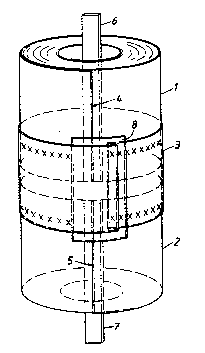Some of the information on this Web page has been provided by external sources. The Government of Canada is not responsible for the accuracy, reliability or currency of the information supplied by external sources. Users wishing to rely upon this information should consult directly with the source of the information. Content provided by external sources is not subject to official languages, privacy and accessibility requirements.
Any discrepancies in the text and image of the Claims and Abstract are due to differing posting times. Text of the Claims and Abstract are posted:
| (12) Patent: | (11) CA 2088914 |
|---|---|
| (54) English Title: | SHEET-WOUND COILS |
| (54) French Title: | BOBINES A ENROULEMENT EN BANDE |
| Status: | Expired and beyond the Period of Reversal |
| (51) International Patent Classification (IPC): |
|
|---|---|
| (72) Inventors : |
|
| (73) Owners : |
|
| (71) Applicants : | |
| (74) Agent: | ROBIC AGENCE PI S.E.C./ROBIC IP AGENCY LP |
| (74) Associate agent: | |
| (45) Issued: | 1996-05-07 |
| (86) PCT Filing Date: | 1991-07-01 |
| (87) Open to Public Inspection: | 1992-02-08 |
| Examination requested: | 1995-01-16 |
| Availability of licence: | N/A |
| Dedicated to the Public: | N/A |
| (25) Language of filing: | English |
| Patent Cooperation Treaty (PCT): | Yes |
|---|---|
| (86) PCT Filing Number: | PCT/SE1991/000471 |
| (87) International Publication Number: | WO 1992002941 |
| (85) National Entry: | 1993-02-04 |
| (30) Application Priority Data: | ||||||
|---|---|---|---|---|---|---|
|
A procedure when joining the tail ends of sheet-wound coils (1, 2)
stacked one on top of the other around an inductive apparatus core with a
certain axial space between them, the joint being effected using a thin
leader strip (3) which is connected to adjacent parts of the coils and joined
to the coils along almost one coil turn.
Note: Claims are shown in the official language in which they were submitted.
Note: Descriptions are shown in the official language in which they were submitted.

2024-08-01:As part of the Next Generation Patents (NGP) transition, the Canadian Patents Database (CPD) now contains a more detailed Event History, which replicates the Event Log of our new back-office solution.
Please note that "Inactive:" events refers to events no longer in use in our new back-office solution.
For a clearer understanding of the status of the application/patent presented on this page, the site Disclaimer , as well as the definitions for Patent , Event History , Maintenance Fee and Payment History should be consulted.
| Description | Date |
|---|---|
| Time Limit for Reversal Expired | 2003-07-02 |
| Letter Sent | 2002-07-02 |
| Grant by Issuance | 1996-05-07 |
| All Requirements for Examination Determined Compliant | 1995-01-16 |
| Request for Examination Requirements Determined Compliant | 1995-01-16 |
| Application Published (Open to Public Inspection) | 1992-02-08 |
There is no abandonment history.
The last payment was received on
Note : If the full payment has not been received on or before the date indicated, a further fee may be required which may be one of the following
Please refer to the CIPO Patent Fees web page to see all current fee amounts.
| Fee Type | Anniversary Year | Due Date | Paid Date |
|---|---|---|---|
| MF (patent, 6th anniv.) - standard | 1997-07-02 | 1997-06-26 | |
| MF (patent, 7th anniv.) - standard | 1998-07-02 | 1998-06-22 | |
| MF (patent, 8th anniv.) - standard | 1999-07-02 | 1999-06-30 | |
| MF (patent, 9th anniv.) - standard | 2000-07-04 | 2000-06-23 | |
| MF (patent, 10th anniv.) - standard | 2001-07-03 | 2001-06-19 | |
| MF (application, 2nd anniv.) - standard | 02 | 1993-07-01 |
Note: Records showing the ownership history in alphabetical order.
| Current Owners on Record |
|---|
| ASEA BROWN BOVERI AB |
| Past Owners on Record |
|---|
| ERIK FORSBERG |
| LENNART LUNDSTROM |
| UNO ZETTERLUND |